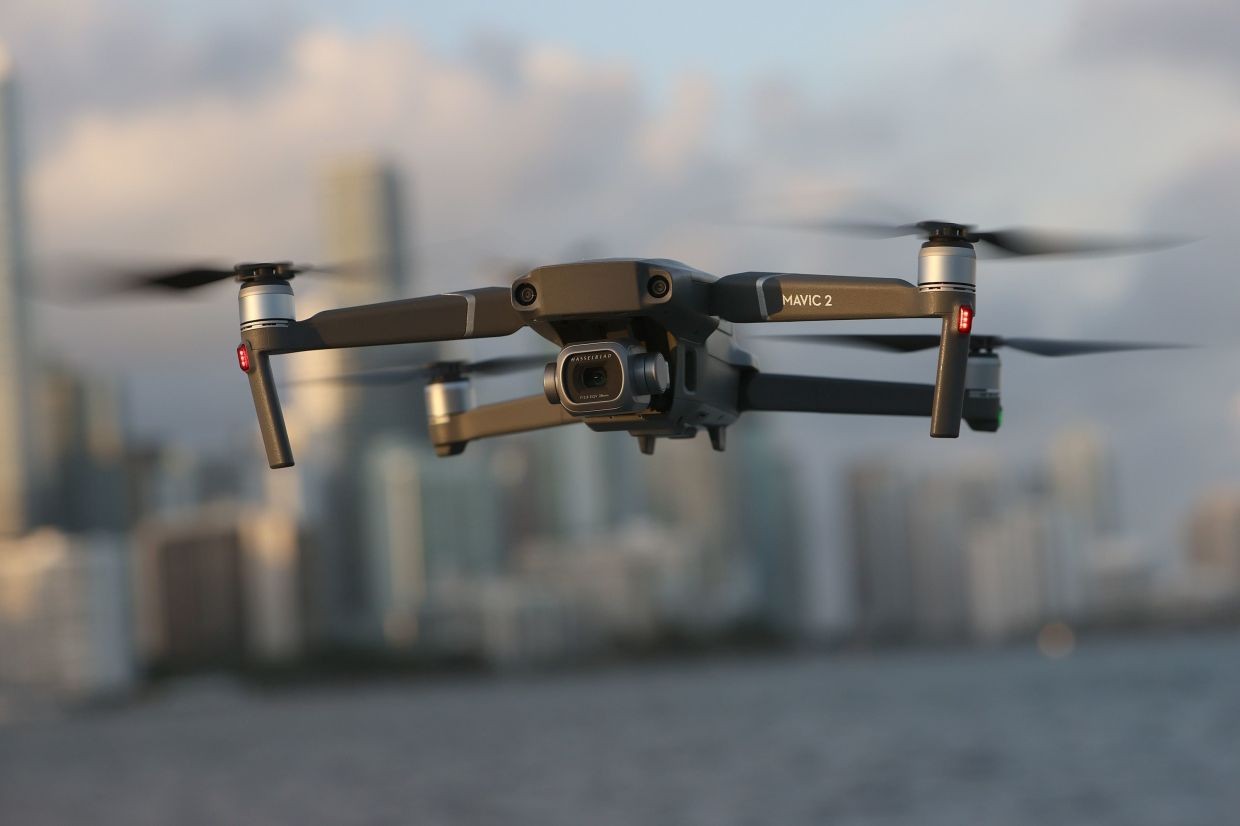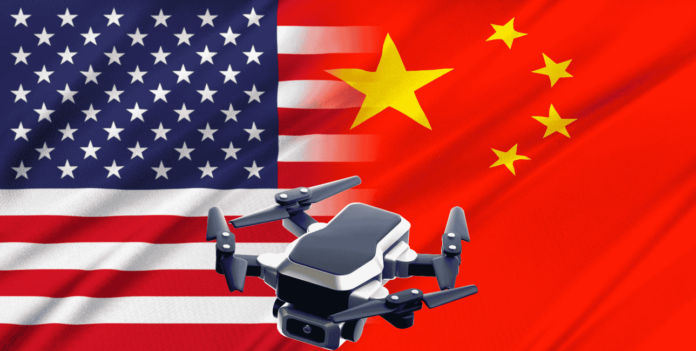President Joe Biden has proposed cutting China out of the drone supply chain. The proposition came hours after Beijing announced export bans on 28 American companies, including leading manufacturers of defense systems like Boeing and Lockheed Martin, citing national security interests as reasons for its export control list.
This is the latest move in an escalating trade and tech decoupling between the world’s two largest economies.
Interestingly, the US Department of Commerce’s Bureau of Industry and Security (BIS) is soliciting public opinion by March 4 on a rule regarding risks associated with China and Russia over information and communication technology and services (ICTS) that are integral to the supply chain for unmanned aircraft systems (UAS) or drones.
It is common knowledge that drones have become the latest weapon in the armory of modern warfare, a system that is cheap yet inflicts heavy damage on the enemy. The system requires sensitive and crucial information about communication technology, a risk that the US is not prepared to take.
Initiating The Process
Highlighting the need to cut the supply chain, the US Commerce Department argued that “acute threats from China and Russia may offer our adversaries the ability to remotely access and manipulate these devices, exposing sensitive US data.”
100X Faster To Produce, Ukraine To Test AI-Enabled, Anti-Drone Missile Designed To Defeat Russian UAVs
The US Commerce Department is following the stipulated process, which enjoins the administration to solicit public opinion by March 4 on a rule regarding risks associated with two adversarial countries over information and communication technology. Response from the public has to come within 60 days. This means that the final decision on the subject will be made under the administration of incoming President Donald Trump.
Surprisingly, the Commerce Department did not visualize the possible leakage of sensitive communication technology to China and Russia.
In December, President Joe Biden signed the 2025 National Defense Authorization Act, which has a section requiring DJI, China’s largest drone manufacturer, to address and dispel allegations of data leaking during an official risk assessment review in 2025.
DJI
Headquartered in Shenzhen, widely considered China’s Silicon Valley, DJI benefits from direct access to the suppliers, raw materials, and young creative talent pool necessary for sustained success.

DJI is short for Shenzhen DJI Innovation Technology Company Limited, a Chinese technology company that designs and manufactures drones and camera systems. It has a global workforce with offices in the US, Germany, the Netherlands, Japan, South Korea, Beijing, Shanghai, and Hong Kong.
Perilous Rivalry
Both China and the US are engaged in an intense tech rivalry and its uses in the military domain. They are also considering the implications of artificial intelligence on future warfare and what it could mean for any confrontation in the Indo-Pacific region.
Unmanned aerial vehicles (UAVs) and other forms of drone technology will be crucial in any potential conflict between the two countries. Thus, both countries want to safeguard their interests in this critical domain.
Other Opinions
Many commentators aver that China is competing with the US in drone technology. Beijing has achieved significant progress in military drones, including MD-19, a ground-breaking platform that can achieve hypersonic speeds and land horizontally. China has invested heavily in drones, making them faster, smarter, and more adaptable.
The US has the largest military drone fleet in the world, with over 13,000 unmanned aerial vehicles. Despite all that, hawks in the American Congress see the dominance of Chinese drones as a potent threat to national security and American manufacturers.
A recently published report by the US Defense Department warns, “China’s development of new unmanned aerial vehicle capabilities for military use is rapidly catching up to the United States’ own advancements in the technology.”
In a piece published by the Global Times on January 3, the author, Tang Tengfei, quotes the Chinese foreign ministry expressing strong opposition to the US Commerce Department’s announcement of considering a new rule that could potentially ban Chinese drones in the US, citing national security concerns.
“China will take all necessary measures to firmly defend its legitimate and lawful rights and interests,” the spokesman said.
Commenting on the subject, Chinese state media, The Global Times, wrote that the world economy has already become too deeply integrated for protectionist measures to remove cost-effective products from the market to succeed.
Lu Xiang, a research fellow at the Chinese Academy of Social Sciences (CASS), told the Global Times that the success of Chinese drones in the US market is rooted in their superior quality and technological innovation.
He added that the US needs quality drones, for example, for monitoring wildfires, which are frequent in the US. Firefighters need drones capable of flying in fumes and flames to perform critical tasks, which is why they rely on Chinese-made drones, he added.
The Global Times said despite the political maneuvering of some US politicians to hit Chinese drones, there had been loud opposition from US users to any such move. In December, the Associated Press reported that US users say Chinese drones can’t be easily replaced.
Wang Yinan, the chief editor of Beijing–based Aerospace Knowledge Magazine, said that Chinese commercial drones have already established a lead, with advantages in technology, the speed in rolling out upgrades and new models, as well as cost, noting that a sudden ban on Chinese drones would ultimately hurt US interests.
- Prof. KN Pandita (Padma Shri) is the former director of the Center of Central Asian Studies at Kashmir University.
- This article contains the author’s personal views and does not represent EurAsian Times’ policies/views/opinions in any way.
- The author can be reached at knp627 (at) gmail.com

